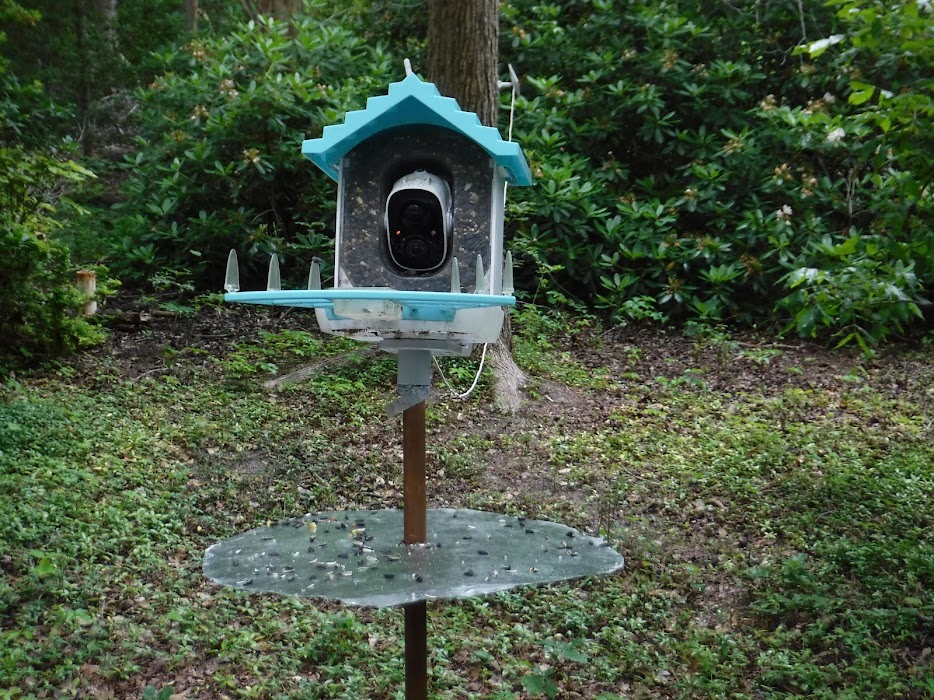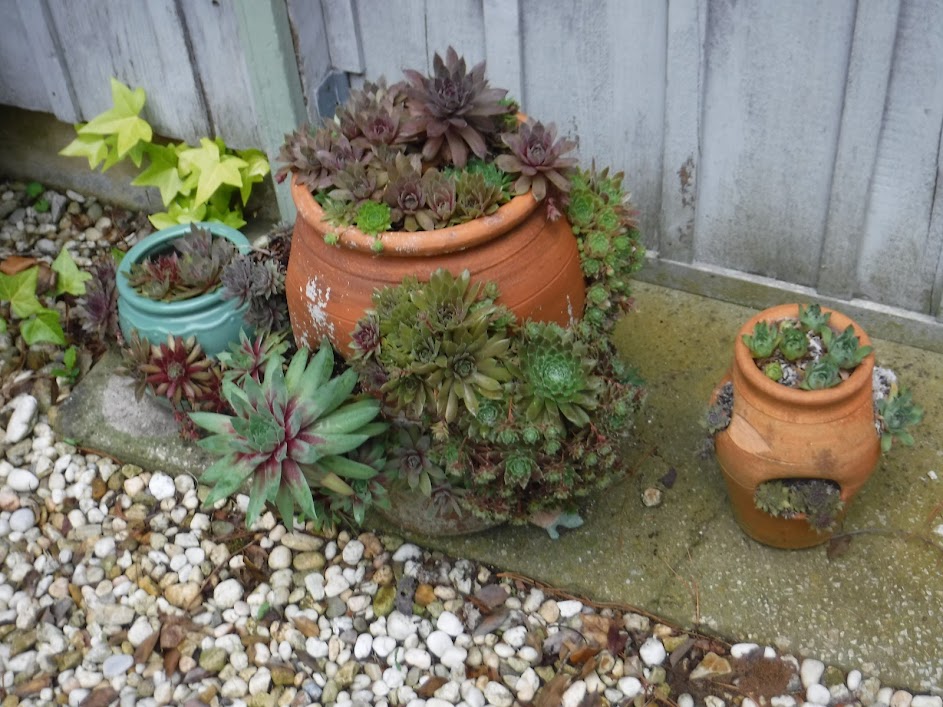Bogturtle's Garden- June 1-10, 2025
Once again, how to get rid of photos mistakenly posted remains a mystery to me.
The shrub grows in the bank of them edging the lawn in the back.
This vine hides the area where we store the trash and recycle cans and other messy stuff.
No thought from the namer as to practicality, spelling or pronouncing the name they gave to the Hydrangea vine. What were they thinking? Schizophragmae hydrangeanoides, or something like that. In time, forms might be found with more impressive, more complete looking blooms. But without them the strange, luminescent look of the foliage is still worth growing this vine. Variety named S.h. 'Moonlight'.
One success. A squirrel had figured out how to get up into the solar powered bird feeder my daughter got me. The cone shaped plastic baffle was all chewed up and useless. I bought a sheet of galvanized duct work metal and cut a circle, and with stiff metal rods underneath, it seems to be working. I had done this with the other bird feeder 20 or so years ago.
Out on the road, by the utility pole, a Snapping Turtle, about a foot long, was sitting. It would aggressively turn to me if I got close. Surely a female looking to dig a nest, but why so far from the creek and uphill? The creek must be a tenth of a mile away and lots of sandy spots were available. I suppose its mature enough, but they grow 3 times as big as this one foot wide on. And I did not, for good reason, bother to try to find out male or female.
purple of the flowers, and mine are white flowered.
Many perennial seeds require stratification, or allowing them to chill, so I was pleased when the new Milkweed sprouted a few weeks after the seeds came, in July or August.
I had planned to put it out by the little pond, but that area gets less and less Sun. Now that the surrounding woods are cleared to get sun on the roof, for the solar panels, I might try again. But the deer...... They browsed some other individual milkweed plants in another pot close by. No blooms this year, maybe, from those.
And on the apron of the garage, now for storage, the strawberry jars are another success. In fact, I could multiply the Hen and Chicks plants by breaking off the little offsets into other pots. Not going to happen soon.
This Japanese or Higo Iris surely has a name, but I don't know it.
This particularly hardy form of Magnolia grandiflora is called 'Bracken's Brown Beauty'. Named for the brown indumentum or felty covering on the bottom of each leaf. To the right is a young Black Walnut, soon to be cut out. Contributed by some Squirrel, no doubt.















Like checking in with you because down here in the deep south flowers have pretty much had it I and I like seeing all of yours. I had a small clump of the native milkweed in my state and sadly this year it is just one stem.
ReplyDeleteI think this Spring has been cool, here. The list of plants that will grow in zone 8 or higher is immense. I may regret ordering an Osmanthus fragrans from Nurseries Caroliniana. A nursery I respect, while I push none on my blog, purposely.
Delete